A blend of flavourful summer tomatoes and cucumbers lighten this wild rice salad with roasted garlic dressing.I suppose some of you are bored of my continued obsession with tomatoes. Too bad, it will continue all through summer. I rarely eat tomatoes in the off season so I go after them voraciously in the summer. They are so fresh and flavourful during the season.
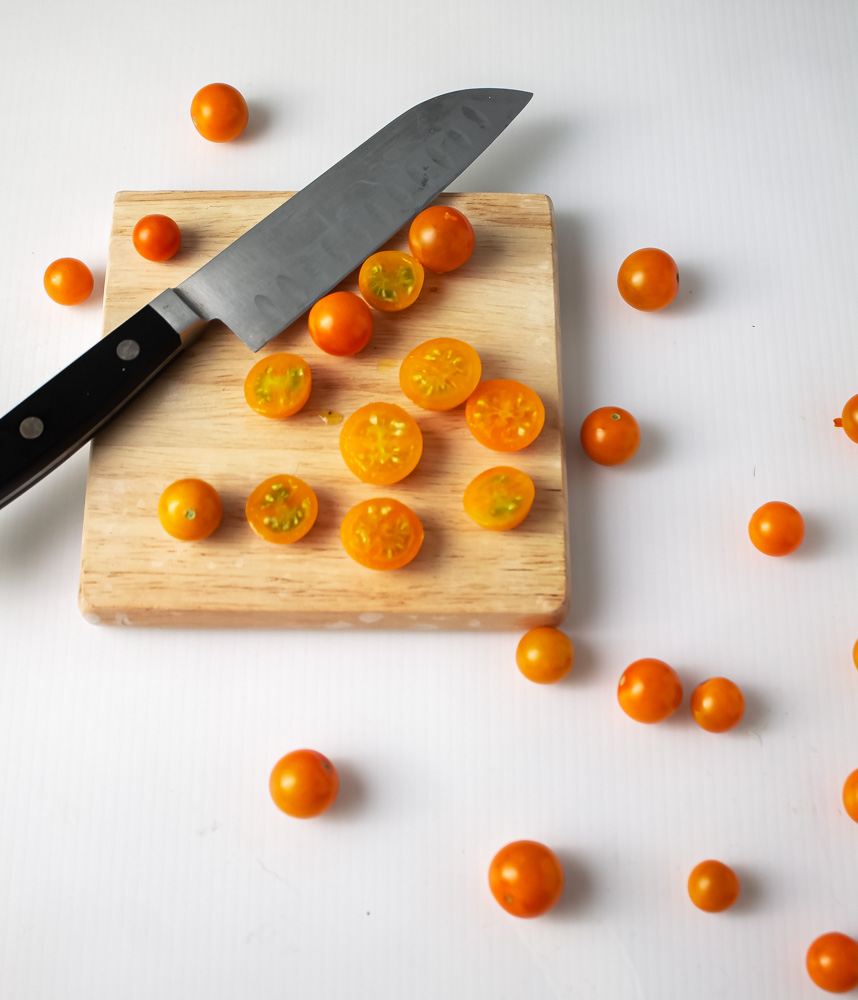
I’m actually rather proud of how local I made this salad. Tomatoes and lemons from my garden; cucumber, garlic, and pecans from one of the local farm stands; olive oil from Il Fiorello; and even the wild rice was from Rancho Gordo out of Napa county. The only thing I’m not certain of is the salt. Spices and a lot of seasonings are just plain hard to source locally. Most of the time the best we can do for things that grow in different climates is to buy from small, local importers. While I want to support local and seasonal food as better for the environment and economy, I’m not going to sneer at globalization.
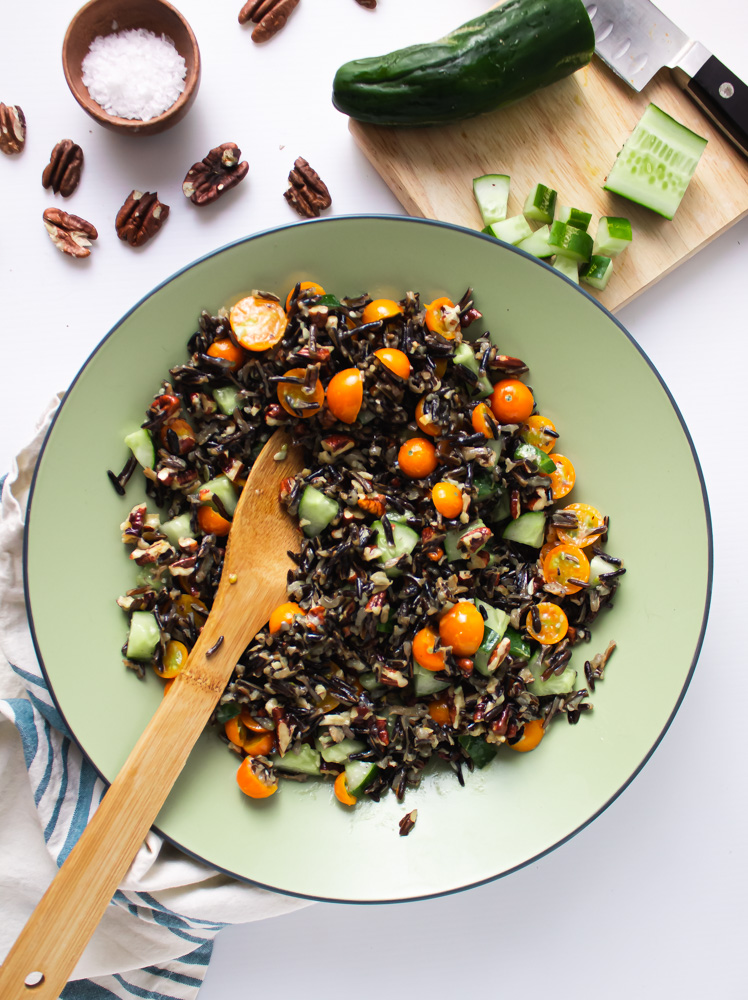
Of course salads are a lot easier than many other things to put together from local, seasonal ingredients. It’s part of why I do a lot of them. Also I find them very easy to throw together. What’s entertaining for me is that they are one of the hardest things for my husband to make. So I thought I’d break down how I go about crafting salads (in a general way).
The Dash of Science
But before we get to that, there’s a few science notes that are worth clarifying: I can’t remember where I read it, but I saw a bit of a sensationalized article recently that was claiming that “cellulose” as an ingredient on fiber containing foods meant that there was wood pulp in them. Well let’s start with how one might come to that conclusion: wood pulp does contain cellulose, a molecule not digestible by humans. But so does an apple. Or those nuts you are snacking on. Cellulose is the rigid, long chain carbohydrate molecule that makes up cell walls in plants. It is basically made up of sugars, but sugars joined in such a way that the human digestive system can’t break them down for individual use.
Lettuce and other leafy greens are almost all cellulose and water. They provide bulk in your stomach and some nutrients (variable by the variety of greens) but are limited in the amount of starch or other bioavailable sugars that they provide humans. Other animals can extract the individual sugars for energy, but their digestive systems are set up differently. For humans, starches and other short chain carbohydrates (err, a couple types of sugar bonded together) are the easiest sources of energy for the body. But starches aren’t bad as some people would have you believe, they are just a way plants store energy that animals can utilize. You simply want to balance consumption of starches with all the other nutrients a body needs to keep operating. And some starch sources have more/(different) nutrients than others.
But back to the wood pulp exaggeration from that article: wood pulp contains lignin. Very much not digestible by any animal that does not have specific symbiotic bacteria in its gut. And I would like to point out that they weren’t talking about ingredients lists specifying “lignin”…
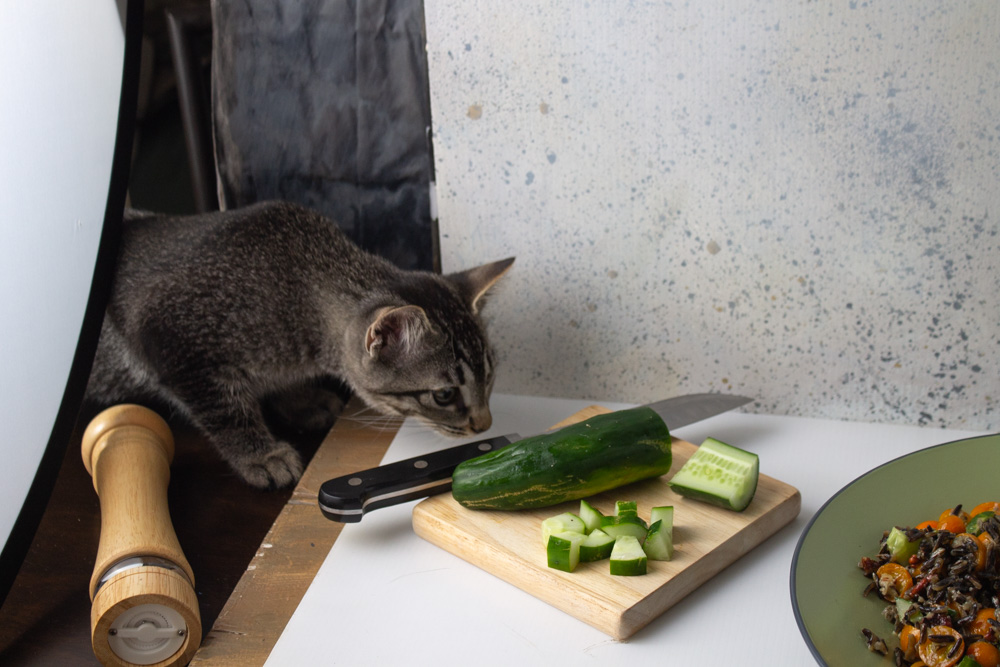
Making Leafy Green Salads
Because greens have so little readily available energy, they are a good dish to incorporate other elements in. Or if you are trying to limit the quantity of calories you are taking in, they will help fill you up. This has never been my motivation, but I like them because they don’t always involve cooking if it’s too warm or you’re in a hurry.
The elements I add to these salads (this is mostly in reference to full meal salads):
- Leafy greens: lettuce, shredded kale or chard (yes it works), sliced cabbage (or any combination there of)
- Extra vegetables: cucumber, blanched green beans, zucchini, cauliflower
- Something starch: carrots, beets, tomatoes, roasted turnips, cooked potato
- A bit of sweetness: dried fruit, fresh fruit, caramelized onions
- Protein: an egg, beans/chickpeas, meats, toasted nuts or seeds, cheese
- And of course whatever dressing you like. My super simple go to is a flavourful olive oil and balsamic vinegar with salt and pepper sprinkled directly on the salad. Fewer dirty dishes that way.
Making Starch Based Salads
By which I mean the primary bulk is formed by starchy foods: rice, farro, or potatoes generally. On rare occasions I’ll use something like couscous or orzo. A starch based salad does have a much higher proportion of bio-available energy than a leafy salad so it’s important to be cognizant of the additions you are making (or the portions) if you care about such things.
I will eat full meal portions of these salads even though there’s not much obvious protein in them (grains and root vegetables do contain proteins, just not as much or the complete sets needed for cell growth like animal proteins do). But other people in my life don’t tend to like them the same way.
- Starch base (typically cooked): potatoes, farro, wild rice, brown rice, couscous, shredded carrot or beets
- Vegetables: cucumber, green beans, broccoli, cauliflower, cooked zucchini
- Something sweet: tomatoes, caramelized onions, dried fruit
- Proteins: peas, beans, eggs, nuts or seeds
- I typically use heavier dressings here: pestos are nice or yogurt-based dressings or even a reduced balsamic vinegar
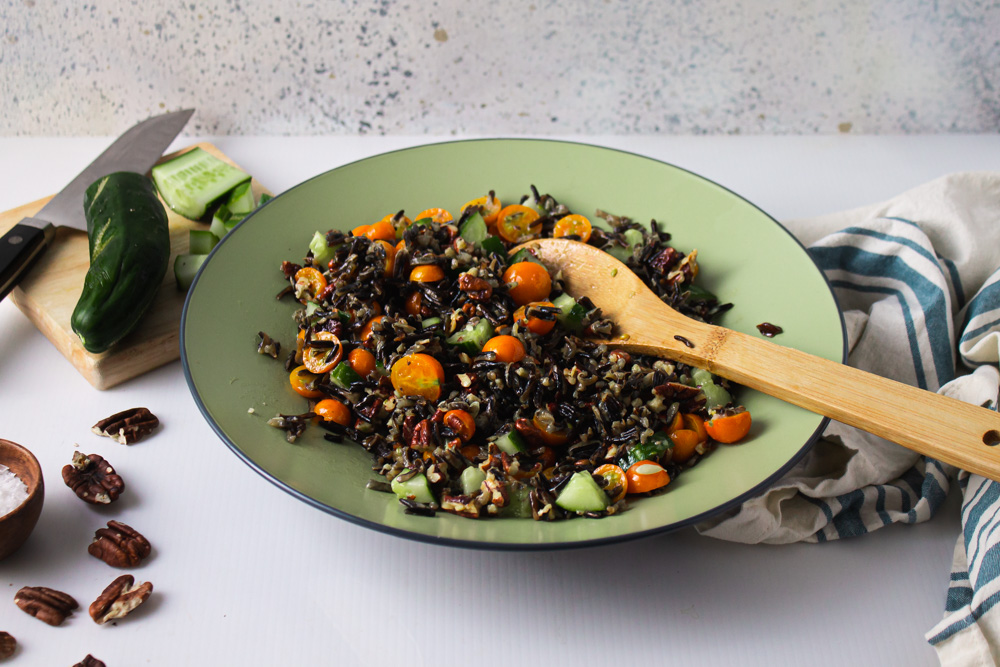
Wild Rice Salad with Roasted Garlic
Ingredients
- ½ c wild rice dry
- 1 ½ c/180g cherry tomatoes
- ½ med/150g cucumber
- ½ c/60g coarsely chopped pecans toasted
- 1 lg bulb/60g garlic
- 2 tbs/30ml olive oil
- 1-2 tsp/5-10ml lemon juice
- Salt
Instructions
- Cook rice in a sauce pan with 1 ½ c water and a pinch of salt over med-low heat until all the water is absorbed (about 40 minutes).
- Slice the tip off the garlic bulb so that most of the cloves are slightly exposed. Wrap in foil packet. Roast at 400F for 30-40 minutes until cloves are lightly golden and very soft.
- Slice cherry tomatoes in half. Diced cucumber into ½” – ¾” chunks.
- Use knife or fingers to extract the roasted garlic from the bulb. You should have about 2 tbs of mashed paste. Whisk vigorously with olive oil, lemon juice, and salt (to taste, start with 1/8th tsp).
- Toss all prepared ingredients in the dressing. Serve cold or at room temperature. Keeps well for up to 1 day.

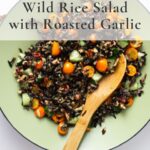
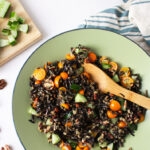
Leave a Reply